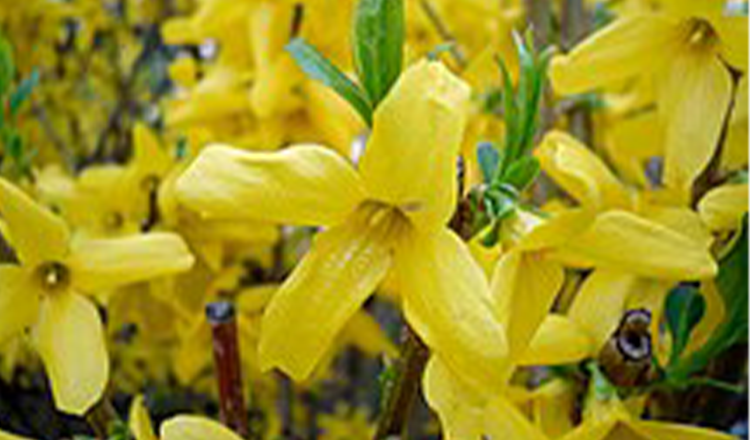Forsythia

Forsythia /fɔːrˈsɪθiə/, /fɔːrˈsaɪθiə/[2] is a genus of flowering plants in the olive family Oleaceae. There are about 11 species, mostly native to eastern Asia, but one native to southeastern Europe.[1] Forsythia – also one of the plant’s common names – is named after William Forsyth.[3][4][5]
Forsythia are deciduous shrubs typically growing to a height of 1–3 m (3 ft 3 in–9 ft 10 in) and, rarely, up to 6 m (20 ft) with rough grey-brown bark. The leaves are borne oppositely and are usually simple, though sometimes trifoliate with a basal pair of small leaflets; they range between 2 and 10 cm (0.79 and 3.94 in) in length and, rarely, up to 15 cm (5.9 in), with a margin that is serrated or entire (smooth). Twigs may be hollow or chambered, depending on the species.[6]
The flowers are produced in the early spring before the leaves, bright yellow with a deeply four-lobed flower, the petals joined only at the base. These become pendent in rainy weather thus shielding the reproductive parts. The fruit is a dry capsule, containing several winged seeds.[3][7]
It is widely stated that forsythia flowers are able to produce lactose. Lactose is very rarely established in other natural sources except milk. However, the presence of lactose could not be confirmed.[8]
The genus is named after William Forsyth (1737–1804), a Scottish botanist who was royal head gardener and a founding member of the Royal Horticultural Society.[9]
